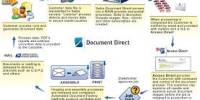Communication skills are a common requirement in library job postings; speaking skills, on the other hand, can be more difficult to acquire and discern. Preparing for a speech is one of the most effective ways to ensure an effective presentation. A good speech comes across as friendly or spontaneous. But how does one go about preparing a speech? It necessitates a significant amount of planning and labor.
How to prepare a speech
(1) Reason to deliver a speech
Are you informing, presenting, or entertaining your audience? Determine a specific purpose, what you want your audience to think or do in addition to the general purpose (e.g., I want my audience to understand the three benefits of holding a faculty workshop on preparing library assignments). It is also useful at this stage to write down your talk’s central idea or thesis statement (e.g., library censorship is increasing).
A speech generally has four (4) reasons, which are:
- To inform
- To convince
- To entertain
- To encourage.
A speaker must be aware of his reasons to deliver any speech.
(2) Selection of topics
Choosing a topic can sometimes come first, as a result of the audience and occasion, such as when a paper is accepted for a conference. If you must choose a topic, make sure it is one that interests you. It’s also a good idea to know a little more about the subject than your audience, but interest is everything. If you are not enthusiastic about the subject, neither will your audience.
The speaker must select the topic considering three things in mind, which are-
- Knowledge
- Audience and
- Occasion
(3) Audience analysis
The speaker must be aware of his audience. Before and during the presentation, he should conduct research on his audience. Before delivering the speech, the speaker should assess the audience’s size, gender, age, education, and knowledge.
On the other hand, while analyzing during the presentation, he should consider the audience’s feedback, such as facial expressions, movements, and noises. Both analyses will alert the speaker to provide a better speech.
Be aware of the audience’s general attitudes and beliefs about you and the topic. Take into account your age, socioeconomic status, and educational level. For example, if you are addressing a veteran group of administrators on a management topic, covering the fundamentals of management would be both boring and potentially insulting.
(4) Presentation of speech
Choosing a topic can sometimes come first, as a result of the audience and occasion, as in the case of a paper accepted for a conference. You have already completed this step if you are presenting a paper. If not, this is the phase of research in which you gather information from printed sources, interviews, discussions with others, and your own expertise.
A. Speaker must have a plan to present his speech considering three (3) parts:
- The beginning should create an interest in the audience.
- The middle should contain discussion.
- The conclusion should summarize the main points or actions to be taken.
B. The length of the speech must be dependent on the circumstances or the subject matter. A five-minute speech would be about 600 to 700 words; the speech should not be lengthy to make the audience bored. Speaker must time his speech to make it pleasant.
C. Speaker must address properly i.e he must know who is to be addressed first and who is to be addressed next.
D. The language of a speech must be simple and direct and should be familiar to the listeners at the time of delivery.
E. The use of appropriate voice is a requirement for good speaking. A faulty voice affects the delivery of the speech. It should be avoided.
(5) Personal appearance and gestures
The speaker’s physical appearance leaves an impression on the audience. As a result, the speaker should dress appropriately for the occasion.
Furthermore, the speaker’s gestures or body movements help him speak. The right movement adds value to the speech he communicates, for example, a bow towards the audience demonstrates honor and respect by the speaker.
(6) Communication environment
The audience takes note of everything that surrounds the speaker. For example, the location of a speech, the decoration, lighting and background of a stage, and the seating arrangement all play a role in creating a better communication environment.
The objects or elements of the environment provide a foreshadowing of the nature and quality of the speech to be delivered. As a result, a posh, decent, and well-decorated environment is required.
















